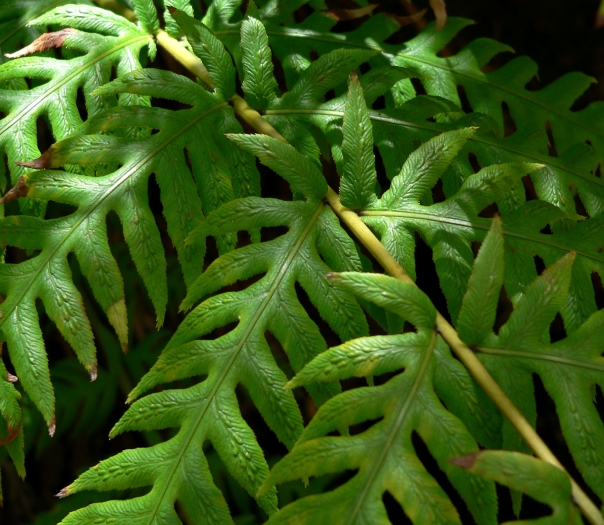Giant Chain Fern
(Woodwardia fimbriata)
Giant Chain Fern (Woodwardia fimbriata)
/
/

Stan Shebs
CC BY-SA 3.0
Image By:
Stan Shebs
Recorded By:
Copyright:
CC BY-SA 3.0
Copyright Notice:
Photo by: Stan Shebs | License Type: CC BY-SA 3.0 | License URL: https://creativecommons.org/licenses/by-sa/3.0 | Uploader: Stan Shebs | Publisher: Wikimedia Commons | Title: Woodwardia_fimbriata_5.jpg | Notes: Uploaded own work with UploadWizard |





































































Estimated Native Range
Summary
Woodwardia fimbriata, commonly known as giant chain fern, is a perennial herbaceous fern native to moist, shaded forest floors and stream banks in the Pacific Northwest, including British Columbia, the West Coast of the USA, and extending to Baja California, Mexico. It can reach a height of 6-8 feet and a width of 3-4 feet, making it one of the largest ferns in North America. The fronds are bright green, with a distinctive chain-like pattern of sori on the undersides, and they create a lush, prehistoric appearance in the landscape.
The giant chain fern is valued for its dramatic foliage and ability to thrive in shady conditions, making it an excellent choice for woodland gardens and shaded areas where other plants may struggle. It is also used in natural landscaping and habitat restoration projects, where its robust size can provide immediate visual impact. This fern is particularly noted for its adaptability to wet environments and is often used near water features or in riparian plantings. It has earned the Royal Horticultural Society’s Award of Garden Merit, indicating its exceptional qualities as a garden plant. While it prefers moist, humus-rich soils, it is relatively low maintenance once established. However, it does require consistent moisture and should not be allowed to dry out.CC BY-SA 4.0
The giant chain fern is valued for its dramatic foliage and ability to thrive in shady conditions, making it an excellent choice for woodland gardens and shaded areas where other plants may struggle. It is also used in natural landscaping and habitat restoration projects, where its robust size can provide immediate visual impact. This fern is particularly noted for its adaptability to wet environments and is often used near water features or in riparian plantings. It has earned the Royal Horticultural Society’s Award of Garden Merit, indicating its exceptional qualities as a garden plant. While it prefers moist, humus-rich soils, it is relatively low maintenance once established. However, it does require consistent moisture and should not be allowed to dry out.CC BY-SA 4.0
Plant Description
- Plant Type: Fern
- Height: 6-8 feet
- Width: 3-4 feet
- Growth Rate: Moderate
- Flower Color: N/A
- Flowering Season: Non-Flowering
- Leaf Retention: Evergreen
Growth Requirements
- Sun: Part Shade, Full Shade
- Water: High
- Drainage: Medium
Common Uses
Bank Stabilization, Deer Resistant, Drought Tolerant, Erosion Control, Low Maintenance, Potted Plant, Rock Garden
Natural Habitat
Moist, shaded forest floors and stream banks in the Pacific Northwest
Other Names
Common Names: Giant Chainfern , Woodwardie Fimbriée
Scientific Names: Woodwardia fimbriata , Woodwardia chamissoi , Woodwardia biserrata , Woodwardia paradoxa
GBIF Accepted Name: Woodwardia fimbriata J.E.Sm.